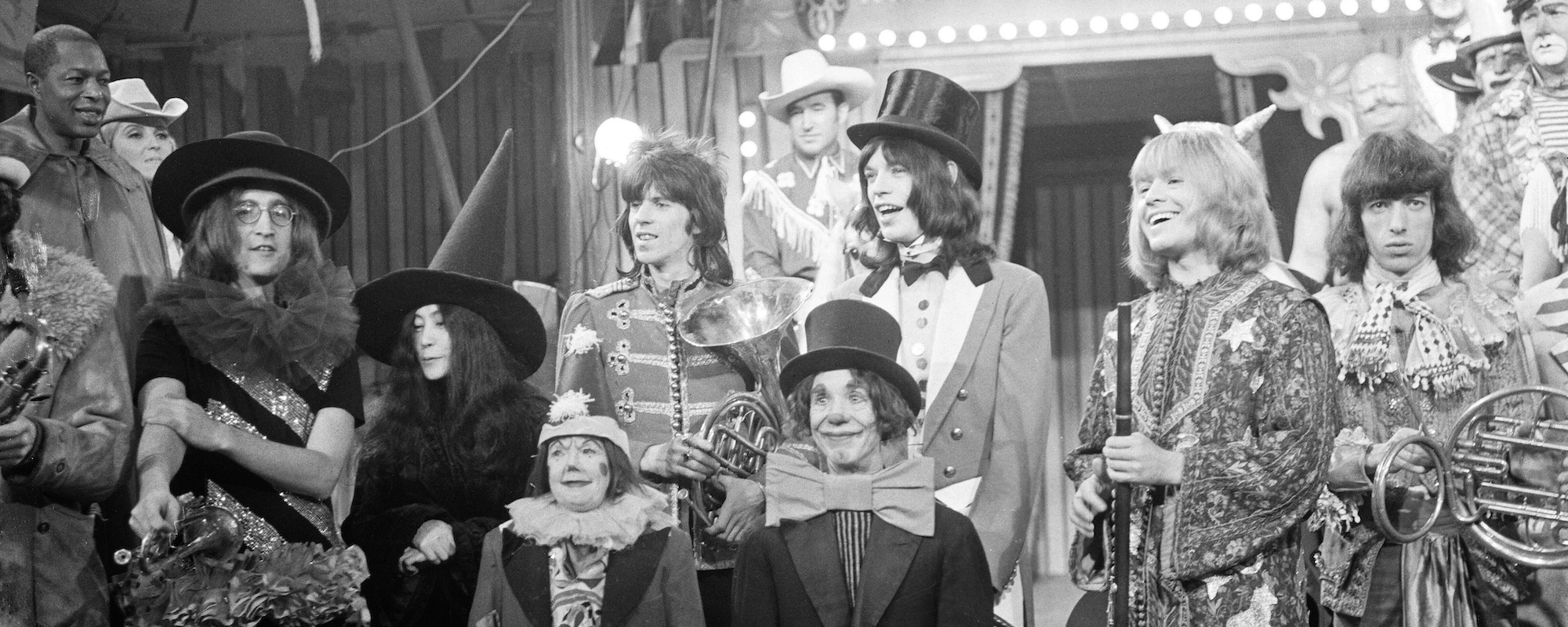Terry Brown has been producing, mixing, and recording albums since the mid-1960s, but many rock fans may only know him in his capacity as Rush’s producer. He mixed their self-titled debut album and produced the remainder of their early period albums, beginning with their 1975 sophomore effort Fly by Night. Brown continued his production work with Rush through the first three studio albums of their most commercially successful period—Permanent Waves (1980), Moving Pictures (1981) and Signals (1982).
Videos by American Songwriter
Brown’s run of nine studio albums with Rush would be an impressive legacy if that were his entire body of work. However, he also worked with some of the most heralded bands in rock history when he began his career as an engineer at London’s Olympic Studios. In 1969, Brown moved to Toronto, where he opened his own studio, Toronto Sound. In the ‘70s, he began to produce albums for Rush and several other Canadian artists, including Max Webster and Klaatu. Half a century later, Brown is still producing albums, while much of his past work continues to be celebrated and enjoyed.
Here is just a small sample of the studio work Brown has done outside of Rush, both before and after his time with the Canadian rock behemoths.
“Substitute,” The Who (1966)
On his website, Brown wrote that recording and mixing The Who’s follow-up to “My Generation” was one of the first rock projects he ever worked on once he had been elevated from his internship at Olympic. It wasn’t a bad way for Brown to get his feet wet with recording a rock song. The Pete Townshend-produced “Substitute” has long been a staple of classic rock and album-oriented rock playlists. It was also The Who’s second Top 5 single on the UK charts (No. 5), following in the footsteps of “My Generation” (No. 2).
Axis: Bold as Love, Jimi Hendrix Experience (1967)
The four engineers who helped to record the Jimi Hendrix Experience’s second album with producer Chas Chandler were involved in making a staggering portion of the classic rock canon. Chief engineer Eddie Kramer, among his many credits, engineered several Led Zeppelin albums and produced albums for KISS. Brown, George Chkiantz and Andy Johns, all of whom were on staff at Olympic, worked under Kramer for this album. Chkiantz’s techniques were responsible for creating some of the effects heard on Axis: Bold As Love, such as the phasing that gives “Little Wing” and “Bold as Love” their psychedelic quality. Chkiantz and Johns would go on to engineer multiple Led Zeppelin albums. Johns would also serve as an engineer on The Rolling Stones’ Exile on Main St. and co-produce Television’s Marquee Moon.
Sweet City Woman, The Stampeders (1971)
This was one of the earlier albums that Brown worked on after setting up shop in Toronto. Due to Sweet City Woman’s hit title track, The Stampeders are familiar to many in the U.S., and it was the Canadian band’s only album to crack the Billboard 200, peaking at No. 172. The single “Sweet City Woman” had a much better showing, reaching No. 8 on the Billboard Hot 100. Brown was one of five engineers to work on the album, but was credited as the sole engineer for “Sweet City Woman.” Mel Shaw won the 1972 Juno for Best Producer for his work on the album, which had been released in Canada as Against the Grain.
Broadcast, Cutting Crew (1986)
The English band made a huge splash with their Gold-certified debut album, which featured the No. 1 hit “(I Just) Died in Your Arms.” Brown served as co-producer and engineer for each of the 10 tracks, except for the Top 10 single “I’ve Been in Love Before,” which was produced and engineered by Michael Barbiero and Steve Thompson. Though Cutting Crew were based in London and Broadcast was recorded in the UK and the U.S., they still had a Canadian connection. The group’s co-founders, frontman Nick van Eede and guitarist Kevin MacMichael, met in Canada when their respective bands (The Drivers and Fast Forward) were touring together.
Brown’s brother Phill—also an accomplished engineer known for his work with Bob Marley, Led Zeppelin, Roxy Music, Talk Talk and Dido, among others—contributed to Broadcast as well. He mixed the track “Don’t Look Back.”
Metropolis, Pt. 2: Scenes from a Memory, Dream Theater (1999)
This album provides Brown with an interesting credit. While Dream Theater’s John Petrucci and Mike Portnoy are credited as the album’s co-producers, Brown contributed production for James LaBrie’s lead vocals, as well as Portnoy’s backing vocals. Perhaps not coincidentally, Portnoy has viewed this album as the Dream Theater equivalent to Rush’s 2112. In addition to his production work, Brown was the voice of the hypnotherapist character in the album’s story of a man who undergoes past life regression therapy.
This would not be Brown’s first vocal performance for a band that he worked with. He provided backing vocals for Rush’s hit “Limelight” and spoken-word vocals for “Cygnus X-1 Book I: The Voyage.”
When you purchase through links on our site, we may earn an affiliate commission.
Photo courtesy Terry Brown MixMusic via Facebook












Leave a Reply
Only members can comment. Become a member. Already a member? Log in.